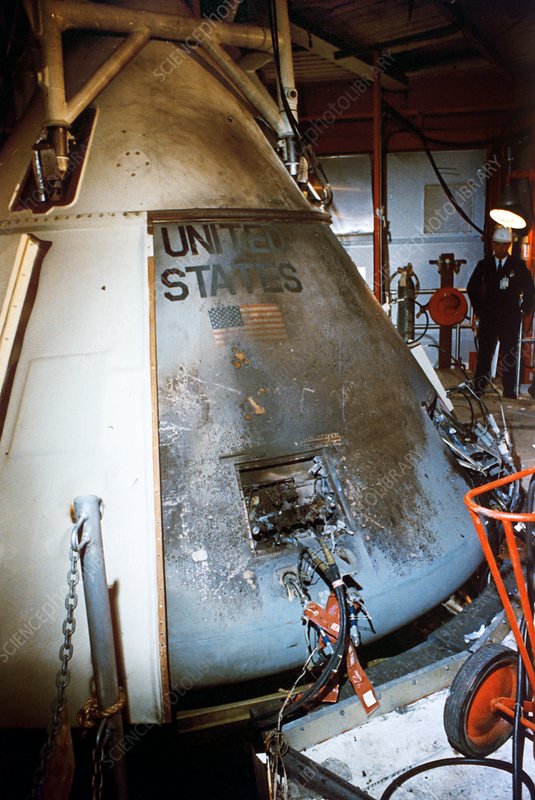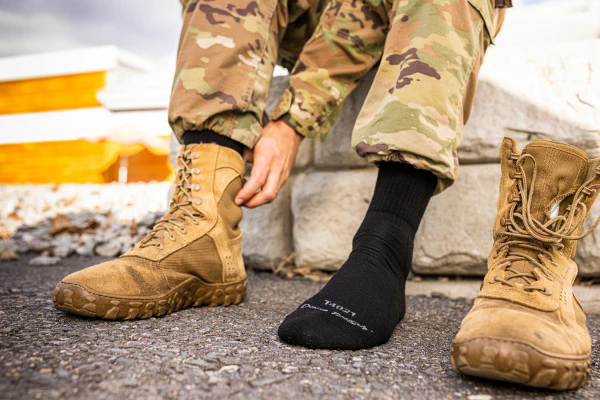The Unmatched Safety of Wool and Natural Fibers
The Dangers of Space-Age Synthetics: Lessons from Space and Military to Consumer Safety
On the afternoon of January 27, 1967, three American astronauts, clad in space suits, boarded the Apollo 1 test capsule for a simulated liftoff. The hatch was sealed, pure oxygen was pumped into the cabin, and the routine countdown procedures got underway. Suddenly, the crew’s biomedical readings skyrocketed, and sensors detected a brief power surge. Then came a frantic report from inside Apollo 1.
“Fire! We’ve got a fire in the cockpit,” yelled pilot Roger Chaffee, “we’re burning up.”
Outside the capsule rescuers were stopped from reaching the escape hatch by heat and heavy gray smoke,” Twenty-seven of them would succumb to smoke inhalation. But the real horror came when teams were finally able to open the hatch of Apollo 1, a full five minutes after Astronaut Chaffee’s initial shout.
The interior of the command module was a scene of charred devastation. Gus Grissom, Ed White and Roger Chaffee had perished. Investigators later found the fire was started by a spark from an electrical short circuit fed by pure oxygen, and a fuel supply of nylon nets and polyurethane panels an inferno took hold. For the crew, shrouded in toxic smoke there was no escape.
After the astronauts were laid to rest, NASA set to work. U.S. Air Force pathologists conducted examinations, concluding that the astronauts died of asphyxia from carbon monoxide and other toxic gasses resulting from the fire. The burns they received were likely survivable.
The use of plastics had come close to derailing America’s lunar goals. Combined with spark and heat, they had shown their lethal capabilities. Over the next year, wool was introduced as a fire retardant, wire bundles were encased in metal, and nylon was eliminated. Pure oxygen was replaced with a more stable nitrogen and oxygen mix, and a single-piece hatch was installed that could be sprung in seconds with a push from an astronaut’s pinkie.



Fast Forward to the Deserts of the Middle East
While the space program recognized the problems with plastics, the military continued to advance with synthetic materials. In the 80’s and 90’s new synthetic fabrics were all the rage. Chemical companies were spinning out nylon, rayon, and polyester for new uniforms and combat clothing. The gear from these fibers didn’t feel good or breathe, but the military was attracted to more affordable uniforms that were easy to care for, wrinkle-free, and rugged. Later, synthetic fabrics like Gore-Tex offered breathability and waterproofing, and polypropylene was introduced as a miracle fiber for base layers.
By 2003, synthetic clothing technology had been integrated into military uniforms. However, as combat operations began in Iraq and Afghanistan, two significant issues with synthetic base layers emerged.
“The first was that synthetic athletic apparel took on a permanent stink,” explains Mitch Driggers, a textiles engineer and retired US Air Force Lt. Colonel. “Soldiers complained that their synthetic base layer clothing quickly developed an intolerable odor that persisted even after washing.”
According to Driggers, the second problem was far more severe. During combat missions involving high exposure to blasts, heat, or flame, the synthetic base layers would literally melt into the soldiers’ skin.
“When exposed to extreme heat and flames, clothing containing synthetic materials like polyester will melt and fuse to the skin. This can lead to horrific, disfiguring burns.”
Marine Corps commanders in Iraq responded by prohibiting troops from wearing synthetic athletic clothing containing polyester and nylon while conducting operations off forward operating bases. Shortly thereafter, all branches of the U.S. military adopted a strict “no-melt, no-drip” policy to protect its troops.
The military, like NASA, recognized that plastics, while cheap to produce have terrible setbacks when compared to more expensive natural fibers. Driggers explains, “Wool fabric base layers are famous for flame retardancy and protection from high heat. We are currently developing a single knit wool jersey base layer t-shirt and a second layer double knit that would replace the current base system made from polypropylene and fire-retardant Nomex. Our system will provide better moisture transportability, suppress body odor, and be a no-melt, no-drip material for heat protection next to soldiers’ skin.” The current cold weather system, ECWCS (Extreme Cold Weather Clothing System), set for introduction late 2024 will be no melt/no drip will also include wool in various layer steps – including socks. All the socks will be wool.


Today’s American wool fabrics are finer and softer than ever. Instead of feeling itchy or prickly, soldiers are reporting that new fine wool base layers are comfortable, extremely breathable, and far better at dealing with sweat and odor than their synthetic counterparts.
The same preference for wool is found among astronauts. In exercise tests aboard the International Space Station, recent crews preferred the breathability and odor resistance of Merino wool shorts and tees over other options. “I’m not surprised about the results of Merino in the space program,” says Driggers. “One thing Army infantry and astronauts have in common is they don’t have access to washing machines.”
Consumer Safety in the Outdoors
The hard lessons learned from the space program and military offer important insights for consumers as well. The durable and waterproof capabilities of synthetics have made them an affordable and long-lasting option for apparel and equipment in the outdoor adventure and leisure markets. However, these materials carry significant risks.
Our boats, RVs, and backpacks, campsites are literally stuffed with petroleum-based materials that ignite easily, burn furiously, shed toxic smoke, and melt to the skin. When exposed to high temperatures, sleeping bags, tents, and clothing made from nylon, acrylic, or polyester will ignite, melt, and produce a hot, sticky substance that causes severe burns.
“It should be safety first, but it’s comfort and low prices that shoppers seem to focus on,” says Driggers. But he notes that change is on the way. In the civilian world, Merino Wool products from companies like SmartWool have gained popularity. Driggers points out, “There was no wool fabric at the major outdoor retailer shows 15 years ago. At an outdoor show now, mixed in with the synthetics, you’ll find a multitude of wool and wool/synthetic blends.”
Want to see wool in action? Check out these videos to see how wool and synthetics really hold up against flames.
Outdoor Safety with Wool
Why Choose Wool for Outdoor Activities
Fire Resistance
Wool’s natural fire-resistant properties make it an excellent choice for outdoor gear, reducing the risk of burns and injuries.
Durability
Wool fibers are incredibly strong and resilient, ensuring your outdoor clothing and gear last longer even in harsh conditions.
Breathability
Wool’s ability to regulate temperature and wick moisture keeps you comfortable during various outdoor activities.
Eco-Friendly
Using wool supports sustainable practices and reduces the environmental impact compared to synthetic fibers.
Comfort
Wool’s softness and flexibility provide unmatched comfort, making it ideal for long hikes and camping trips.
Odor Resistance
Wool naturally resists odors, keeping your gear fresh even after extended use.
Smarter indoor options
The dangerous realities of synthetic fibers also have the attention of fire departments across America. Gas, smoke, and toxic fumes are the most common cause of death following domestic fires. Fatalities are more likely to occur in rooms with soft furnishings or bedding.
What most manufacturers don’t care about, and what most consumers don’t know, is that wool’s low burn point helps to reduce smoke and the risk of fire spreading within a house or other building. From a safety and luxury perspective wool is an ideal fiber for interiors such as carpets, curtains, upholstery, mattresses, blankets, and pillows.
The dark history of synthetic materials in space, military, and consumer applications highlights the importance of understanding the potential dangers of these synthetic materials. As we continue to invite petroleum-based plastics into our lives it is crucial to prioritize safety and consider natural alternatives like wool.
Wool & Fire Facts
Research indicates that wool used in apparel and furnishing textiles can provide a greater level of fire safety than other fibers:
- Wool is difficult to ignite (1058-1112 °F) compared to Polyester (905-1040 °F)
- Wool does not melt and stick to skin unlike nylon, which melts at 320-500 °F
- Wool does not produce toxic fumes when exposed to high temperatures


